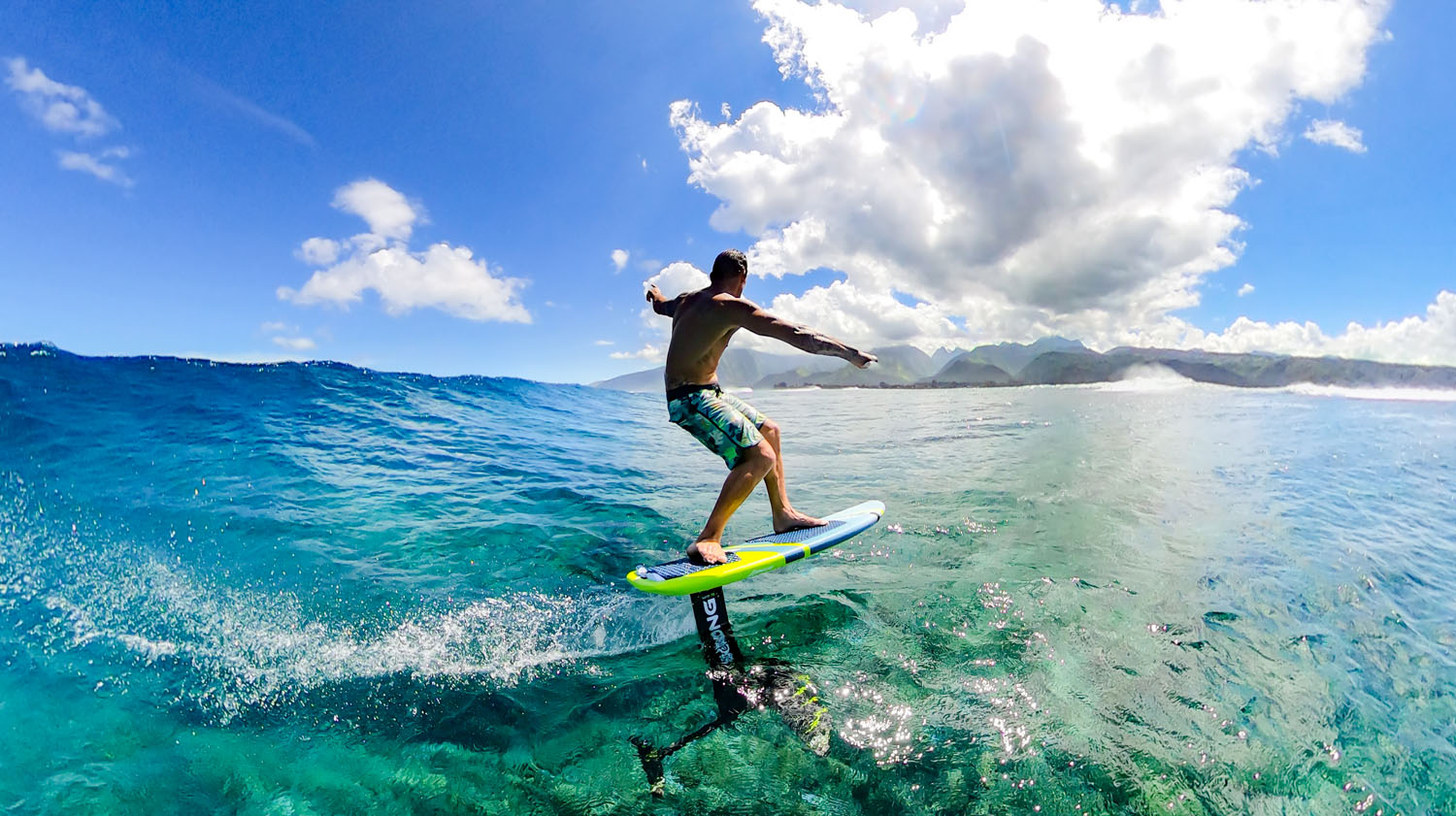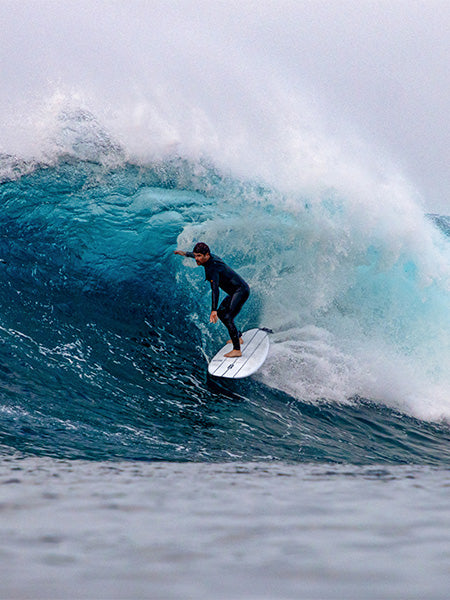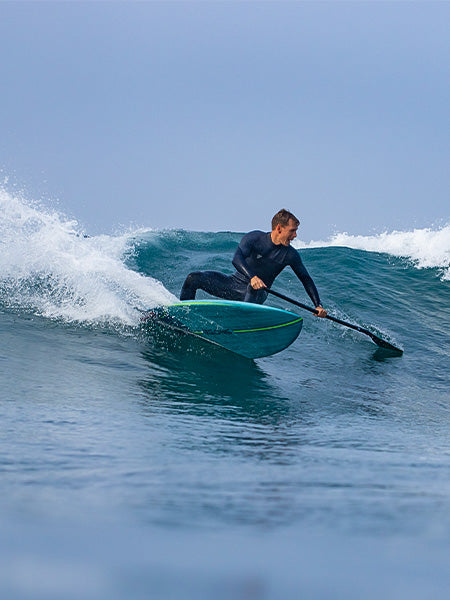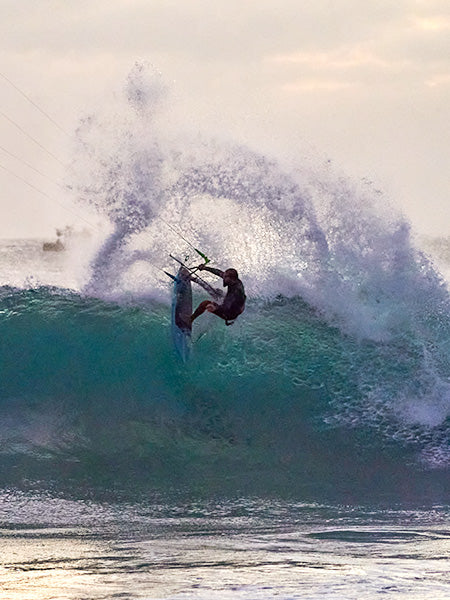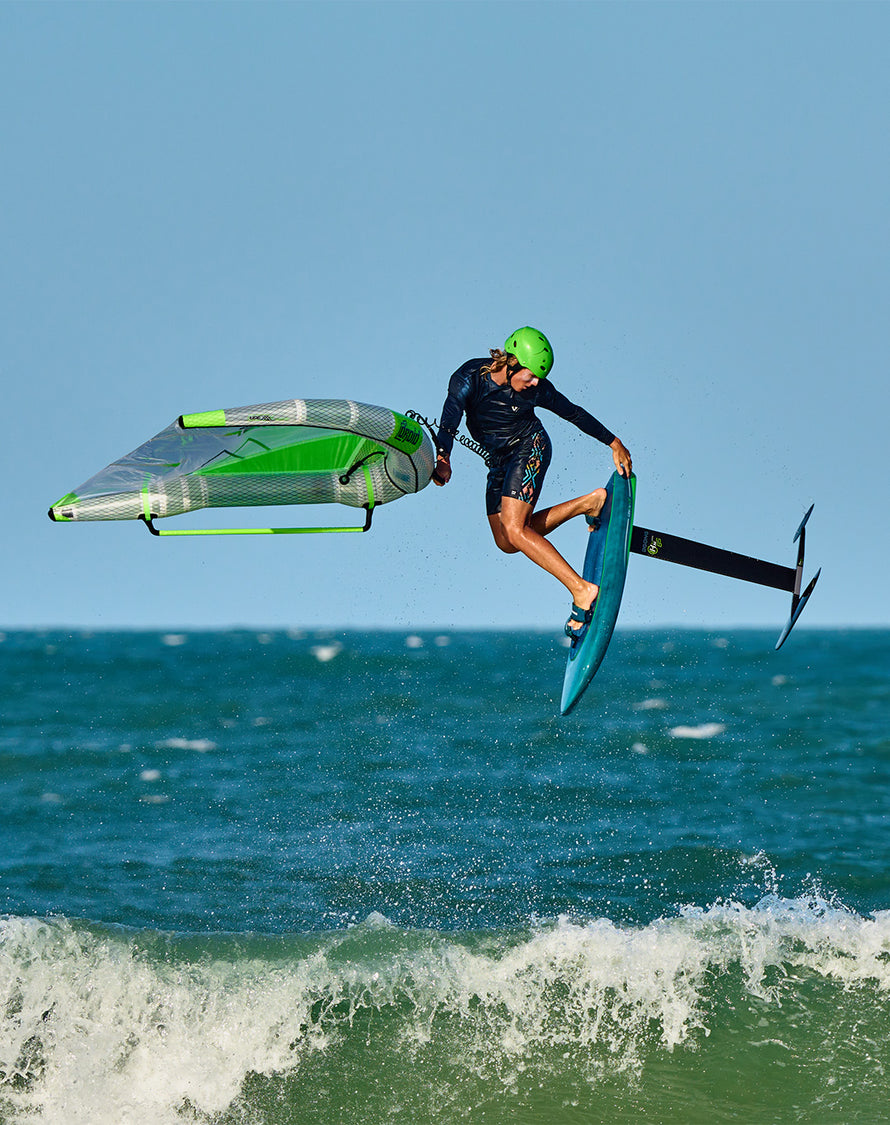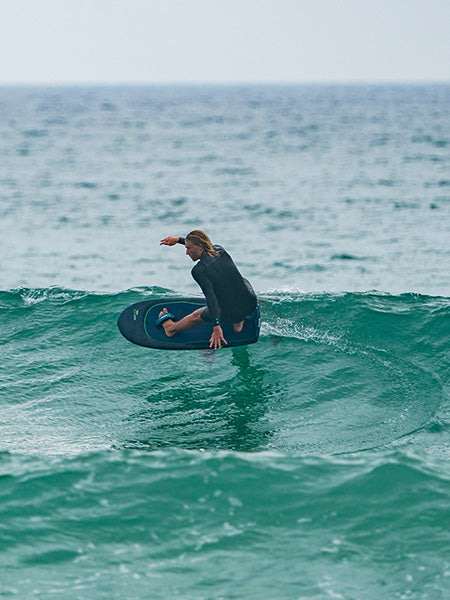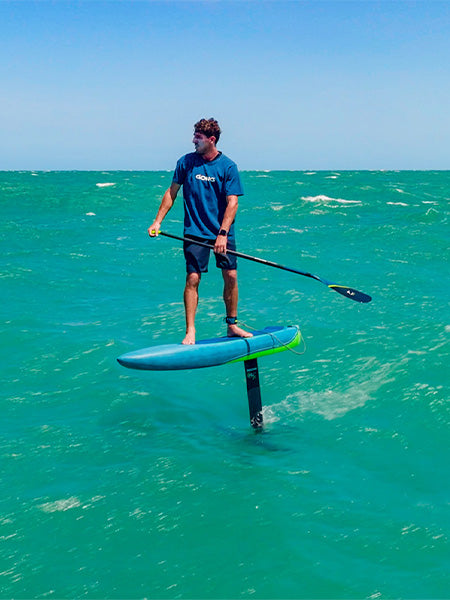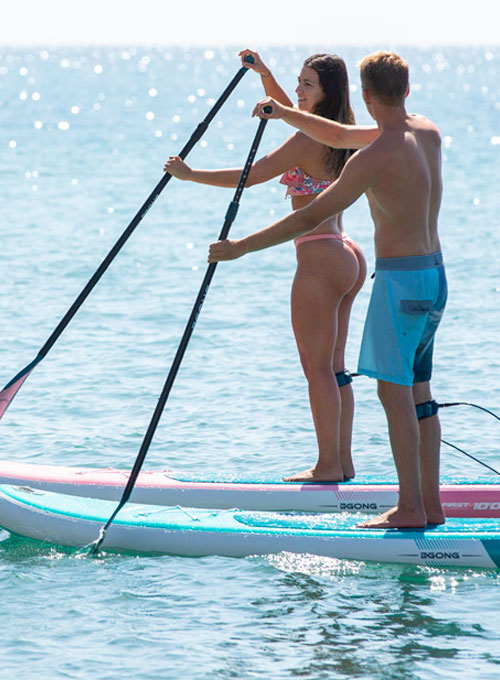GET INTO SURF FOILING
Back
Many of you want to get into surf foiling, and you’re right because this sport is magical, and allows you to multiply the number of sessions. Many mistakenly think that it takes a level of world champion to get started. However, experience in surfing to position yourself well, a correct paddle and experience on short to mid-length boards are sufficient.
Here are some additional tips for getting started in foiling surfing:
Choosing the perfect gear to start with
For the board, your choice will be largely guided by what you are already used to surf every day. But keep in mind that this board is intended to help you take off on waves of 30 to 50 cm at first, waves with little energy, so a board with a minimum of length and volume to paddle and take off easily. If you are already good at surfing, and your everyday board is a shortboard with a volume of around 30L, you can go for a model that’s 5′ long, but with more volume (at least 10 to 15 liters more) than your everyday board.
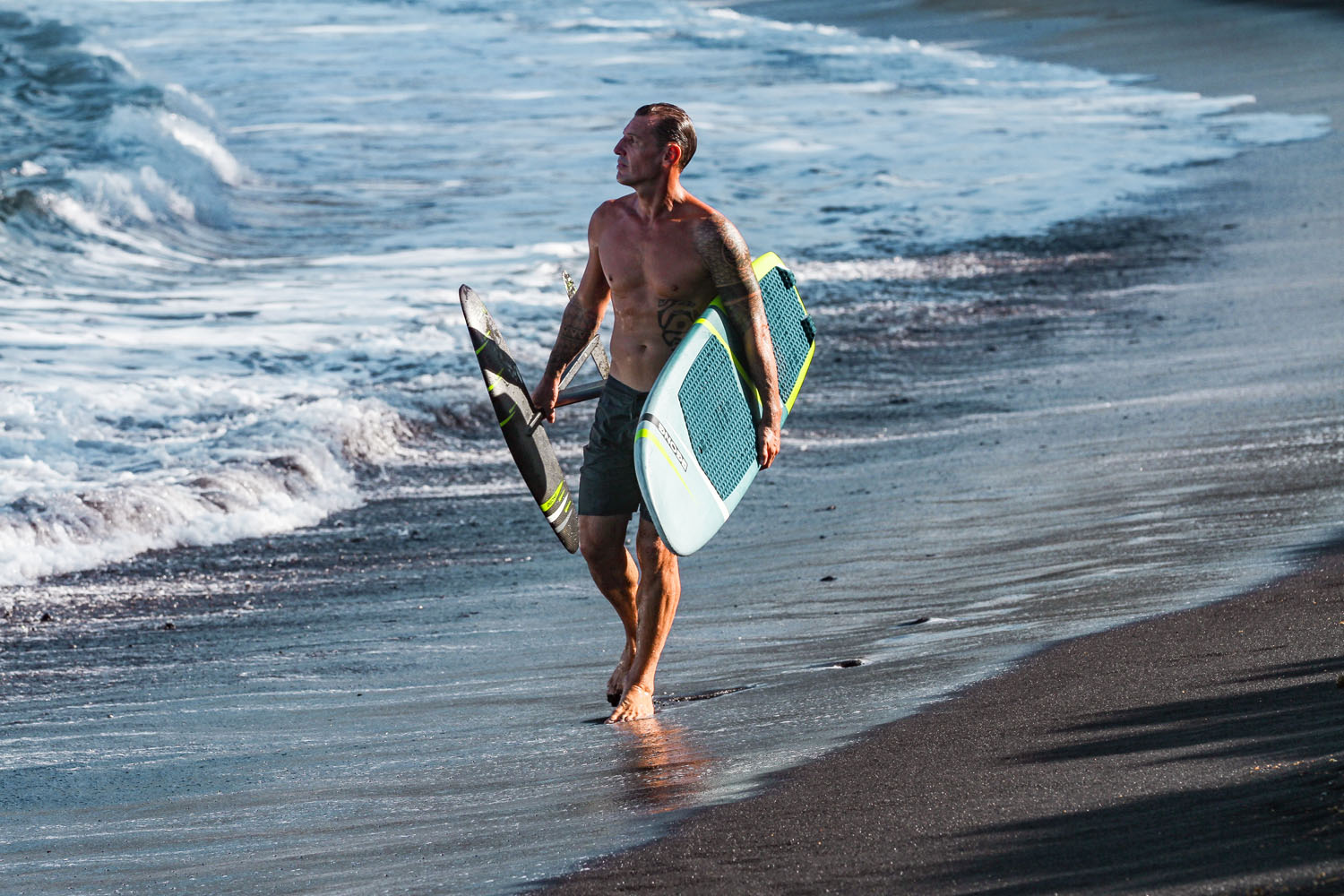
If you are not an expert in shortboards or prefer comfort, an “excess” of volume will never be a handicap in these types of conditions and for your first flights.
You will want to change in order to progress more, to support your turns or to pump more efficiently. But in any case, it will take several dozen sessions before reaching the full potential of your equipment.
For the foil, prefer a wing that offers a lot of lift at low speed. When you start, the parallel with surfing is very easy to understand, you choose waves with little energy, and you are either in the foam or far from the wave. A beginner in surfing will therefore prefer a board with length and volume to compensate for its lack of technique or placement on the wave. In foil, it’s exactly the same thing, we will start with a thick profile that will offer lift at low speed. So, whether you are “badly” placed on the wave or the swell bump, and even at low speed, you will fly. A thick profile will be stable and relatively slow, but when starting out on a surf foil speed is not really a priority.
In our range, the Rise and X-Over front wings will be the most suitable. The Rise if you are a total beginner, the X-Over, if you already have a little experience in foiling, or if you are likely to progress very quickly as soon as you test a new sport.
The mast size used for this practice is around 65/70 cm, but to start off smoothly without being afraid, you can do your first sessions with a shorter 45/55 cm mast. You will familiarize yourself more easily with the sensations of flight, and you will gain confidence more quickly.
The choice of the spot and the waves
Preferably choose a spot that you know, on which you have your bearings. Choose waves empty of all surfing, small and soft waves that will be neglected by other riders.
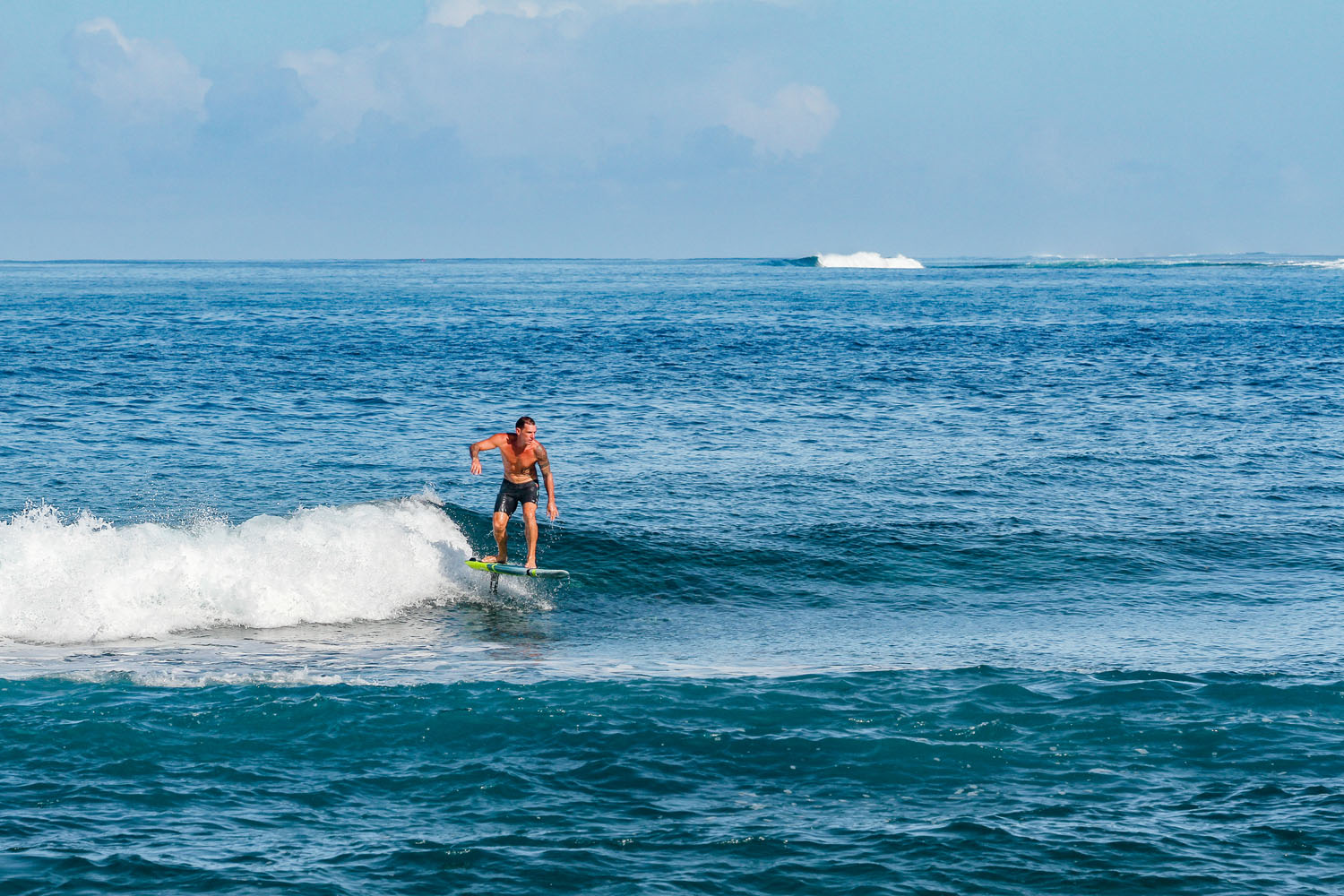
To start off well, the size and shape of the waves are essential. Slow waves, with little slope, from a knee size to a thigh size, which ideally will have a hard time breaking, and will die in too much water. It could be a current edge, or a reef with too much water at high tide, for example. Ban all hollow waves at first.
The first take offs
Forget your surfer reflexes, don’t jump on your feet when high on the wave. Let the board descend slowly in bodyboard mode, and do your take off at the bottom of the wave on a flat area. By putting a lot of pressure with your hands on the front of the board, you will prevent the foil from getting up too early. During the take off, focus on your front foot, it must be placed perfectly in line with the board, it is your front foot that determines 80% of the balance in flight.
This is the key to good stability. So stay relaxed, and keep good flexion.
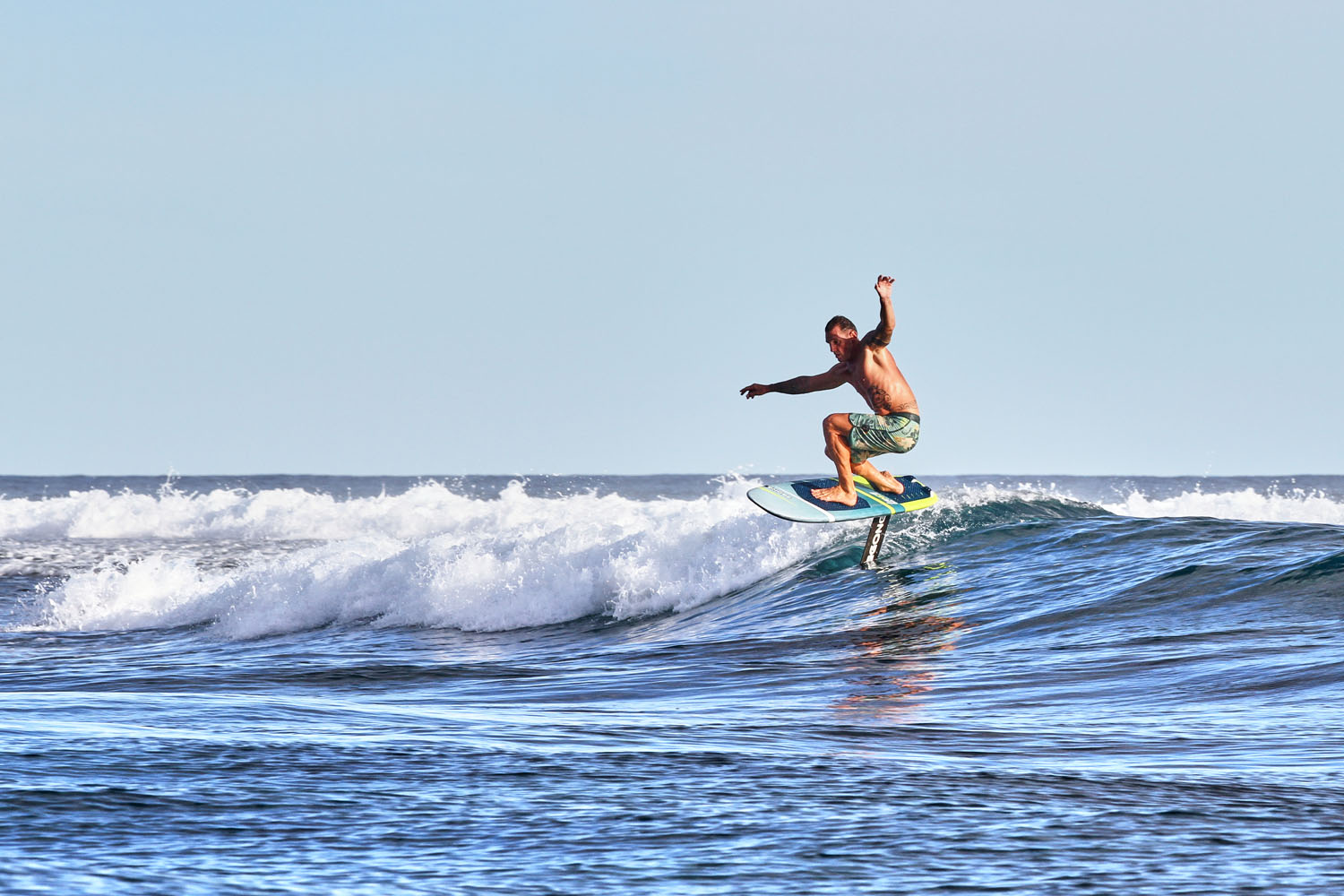
Do not force yourself to fly on your first waves or during your first session. Just try to feel the whole thing lighten up, and if you can feel the whole thing going sideways it means your front foot is not perfectly centered.
To make it easier to control the foil, adjust it towards the back of your board.
The first flights
The first mistake is usually to be surprised by the rise of the foil, and having the reflex to put your weight on the rear, the foil will then pitch up, and you end up stalling. Flight is all about small adjustments, very fine downforce. It’s the speed that will get you off the ground, so as soon as you feel the foil going up, gently lean forward. This will be enough to put weight on your front leg and stabilize the flight.
Give yourself steps to progress. A few sessions to fly straight with the foam, simply to learn how to stabilize your flight. Then a few sessions to follow the waves, doing diagonals. Then gradually, you will tighten these diagonals. Your first turns, first wave outings, first pumping, first connections, …
The path may seem long, but with each session, at each stage of progression, you will be rewarded with new sensations. Think back to your very first wave in surfing, and the joy it got, multiply that by 100, and you’re almost there
There are only two categories of surf foilers, those who drop after two sessions, usually due to totally unsuitable conditions or equipment, they get scared, and give up. Then there are the others for which surf foiling becomes totally addictif. There is no in-between.
